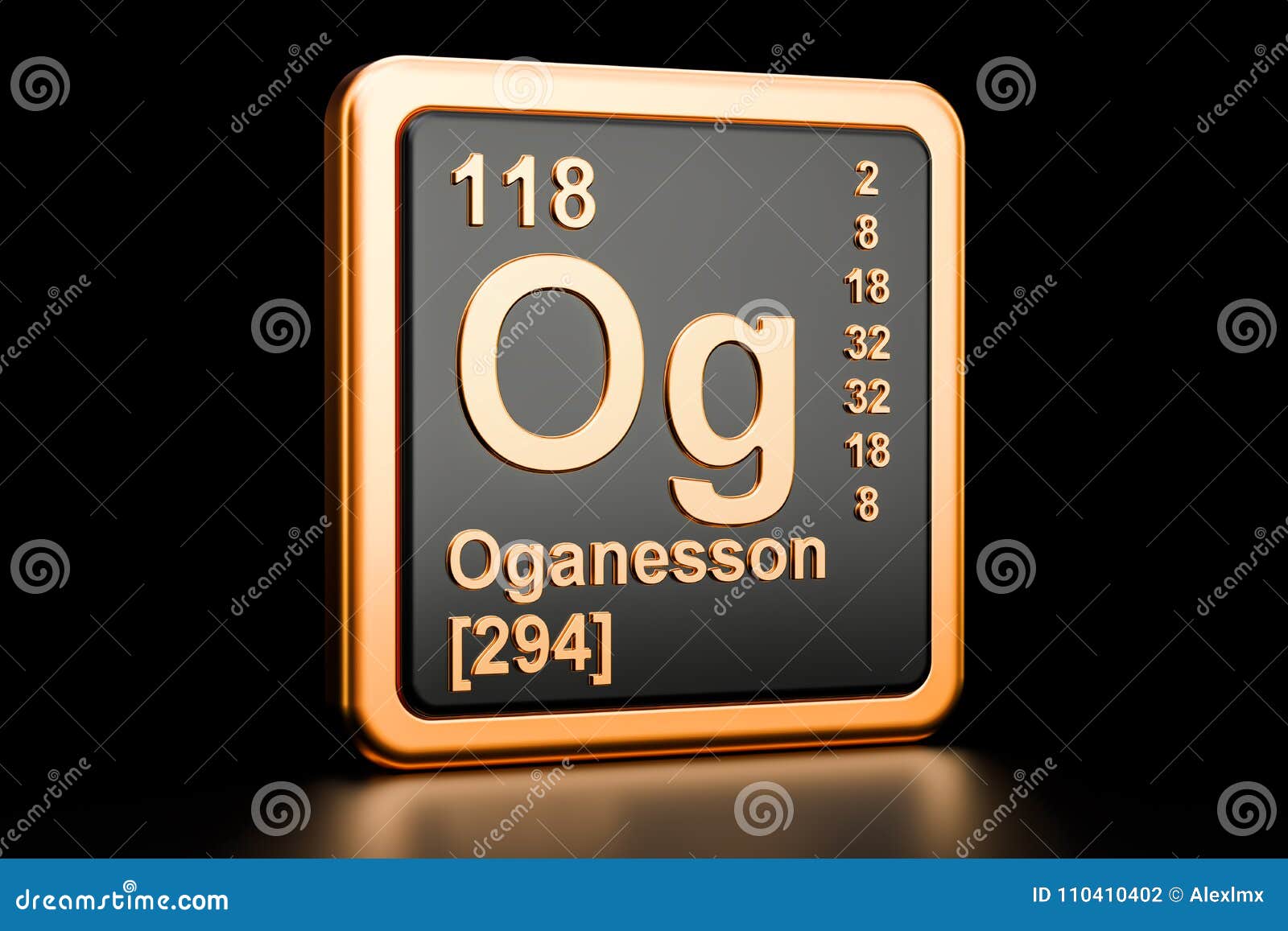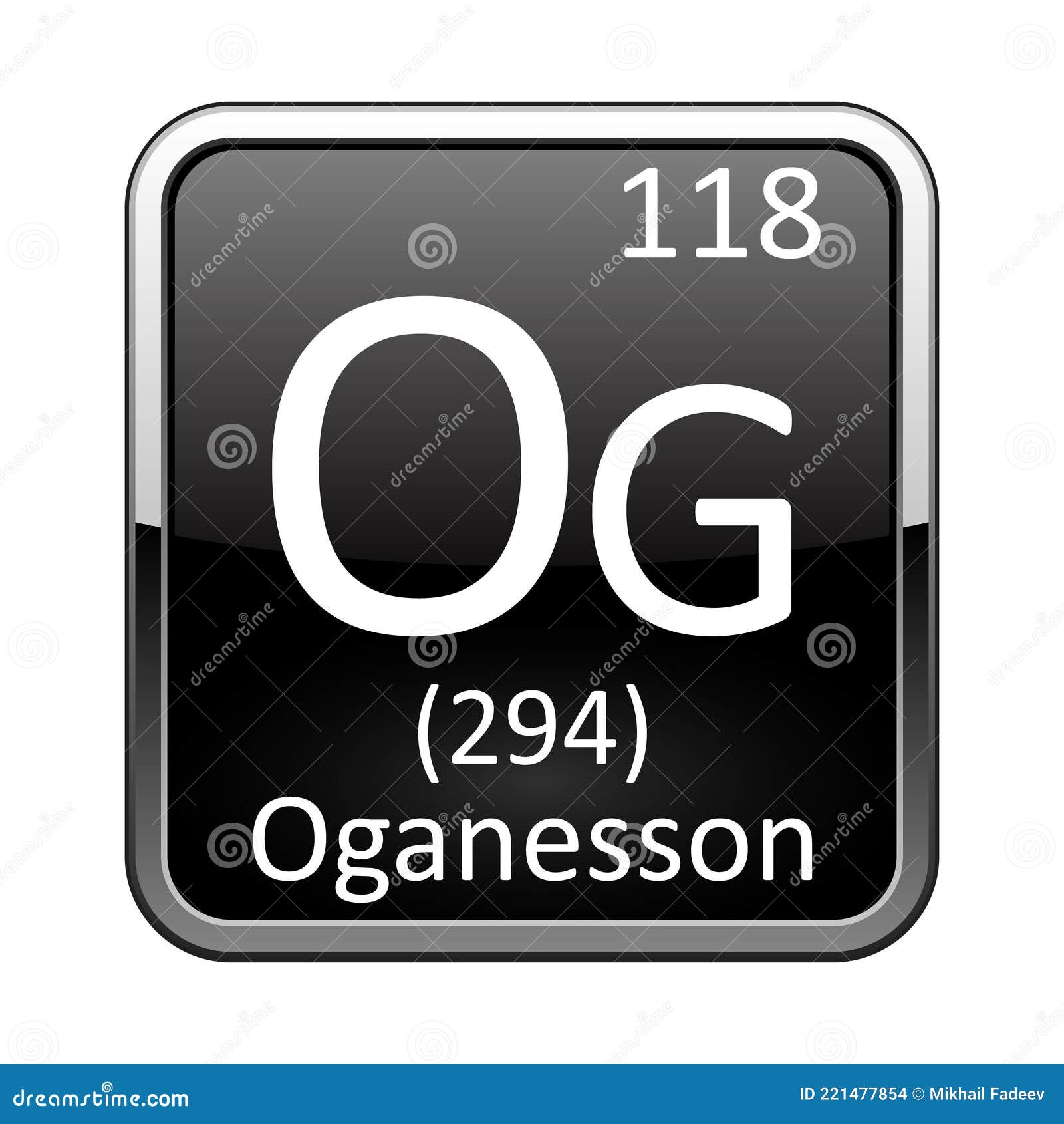

The alpha particles emitted by polonium-210 don't have enough energy to penetrate the skin, but the element emits a lot of them. Should you happen to see polonium, you might notice something is a bit "off" about it because it excites molecules in the air to produce a blue glow. Polonium is used as an atomic heat source, in anti-static brushes for photographic film and industrial manufacturing, and as a nasty poison. Of all the elements on the list, it's the one you're least likely to encounter in person unless you work at a nuclear facility or are a target for assassination. Polonium is a rare, radioactive metalloid that occurs naturally. Polonium isn't much worse than any other radioactive element, until it gets inside your body!.
Oganesson symbol how to#
Ready to meet the baddies? Take a look at this list of "the worst of the worst" to learn how to recognize these elements-and why you need to try your hardest to steer clear of them. The most reactive elements and compounds can ignite spontaneously-or even explosively, and generally burn in water as well as in the air. Reactivity: Some elements present a risk due to extreme reactivity.Environmental Protection Agency (EPA) defines a toxic chemical as any substance which can be considered harmful to the environment or hazardous to health if inhaled, ingested, or absorbed through the skin. Toxicity: Some elements are dangerous because of their inherent toxicity.

While radioisotopes can be made from any element, you'd do well to steer clear of any element from atomic number 84, polonium, all the way to element 118, oganesson (which is so new it was only named in 2016).

What makes an element "bad"? There are three broad categories of nastiness: While we require some of them in order to survive, others are downright nasty. Nope! Most are invisible or innocuous-looking. The article was first published on June 8, 2016.You might think the worst chemical elements might offer some sort of warning, like smoke or a radioactive glow. This article is reproduced with permission from Chemistry World. ‘Now the public and the scientific community can weigh in on things.’ ‘It’s important for people around the world to review the names to make sure that they fit with all the different languages,’ Soby tells Chemistry World. The names will now be put up for public scrutiny in a five month consultation process before Iupac ratify the final names. The same group has also named element-118 oganesson (Og), in honour of the Russian nuclear physicist Yuri Oganessian who led the team that synthesised element-117. Named after Tennessee, tennessine is a tribute to the region where a large amount of superheavy element research is conducted in the US. Moscovium is named after Moscow, where the Joint Institute of Nuclear Research is based. Both element names take their cues from geographical regions. A collaboration between the Joint Institute of Nuclear Research in Russia and the Oak Ridge and Lawrence Livermore National Laboratories, US, elements 115 and 117 were both created in 2010. Scientists based in Russia and the US who discovered elements 115 and 117 have put forward the names moscovium (Mc) and tennessine (Ts), respectively. Named after Japan, the element will be the first East Asian name to appear on the periodic table if ratified. The element was synthesised by Kosuke Morita’s group at RIKEN in Japan after they bombarded a bismuth target with zinc-70 nuclei in 20. Nihonium (elemental symbol Nh) is the proposed name for element-113. The criteria states an element may be named after a mythological figure or concept, geological place, scientist, elemental property, or mineral. The groups responsible for the discovery of these new elements each put forward their proposed name and symbol after Iupac confirmed their existence in January 2016. ‘It’s an exciting day for the world,’ says Lynn Soby, Iupac’s executive director. The proposed names for elements 113, 115, 117 and 118 are nihonium, moscovium, tennessine and oganesson respectively, the International Union of Pure and Applied Chemistry (Iupac) has announced.


 0 kommentar(er)
0 kommentar(er)
